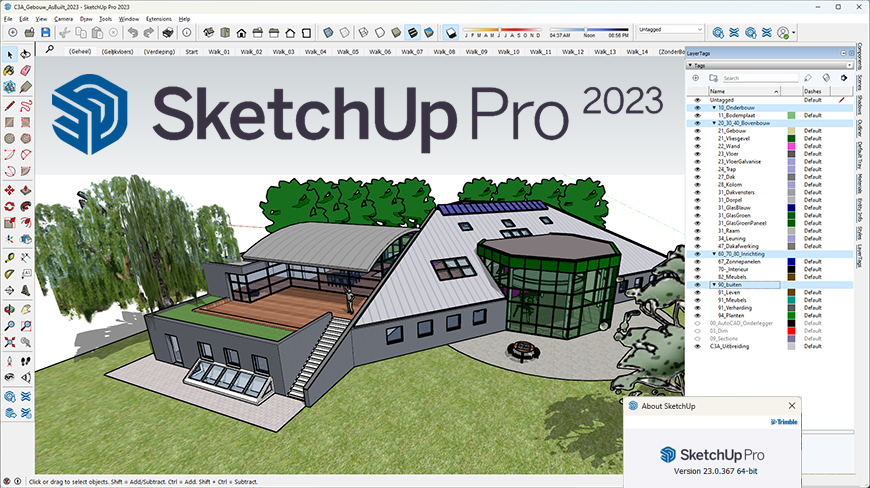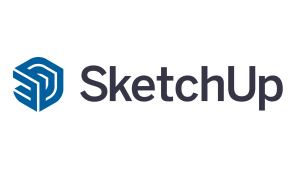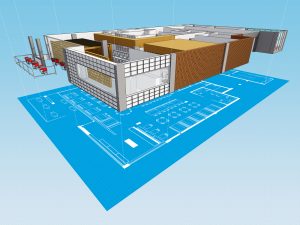

Key features of SketchUp include:
- 3D Modeling: SketchUp allows users to create 3D models of buildings, objects, landscapes, and more. It provides a range of drawing and modeling tools, including lines, shapes, push/pull, and extrusion, to create and manipulate geometry.
- 3D Warehouse: This is an online repository where users can find and share a wide variety of 3D models, components, textures, and materials. It’s a valuable resource for quickly populating models with pre-made content.
- Extensions and Plugins: SketchUp supports a vast library of extensions and plugins that enhance its functionality. These can add specialized tools, import/export capabilities, rendering engines, and more.
- Import and Export: SketchUp supports various file formats for importing and exporting models, making it easy to collaborate with other software applications. Common formats include DWG, DXF, OBJ, STL, and more.
- Dynamic Components: Users can create dynamic components that have adjustable attributes and behaviors. This is particularly useful for creating parametric models and designs.
- Layout: SketchUp Layout is a separate application that allows users to create 2D presentations and documentation from their 3D models. It’s often used for generating architectural drawings, construction documents, and presentations.
- 3D Printing: SketchUp supports 3D printing by exporting models to formats compatible with 3D printers. This is useful for prototyping and physical model creation.
- Terrain and Site Modeling: SketchUp includes tools for creating terrain and site models, making it suitable for landscape design and urban planning.
- Visualization: While SketchUp has its own rendering capabilities, users often employ third-party rendering plugins to achieve high-quality visualizations and realistic renders.
- Education and Training: SketchUp is widely used in educational settings to introduce students to 3D modeling and design concepts due to its intuitive interface and accessibility.
It’s important to note that SketchUp comes in different versions, including SketchUp Free (web-based), SketchUp Pro (desktop application with advanced features), and SketchUp
Studio (a comprehensive package including Pro and other software). Features and capabilities may vary between these versions.
As of my last knowledge update in September 2021, please check the official SketchUp website for the latest information about the software, its features, and any updates that may have occurred since then.

